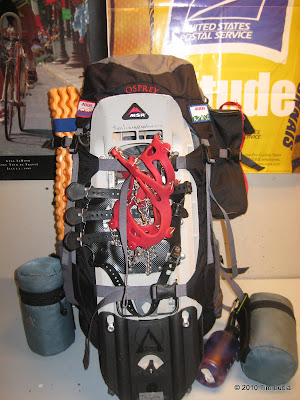DayTrip
Well-known member
- Joined
- May 13, 2013
- Messages
- 4,034
- Reaction score
- 266
I was taken aback on the trail last week when a guy asked me if I was staying out overnight. Hanh? "Nope. Just day hiking but I like to be prepared" was my reply. But since the weather has turned colder way back when I've noticed that most people have pretty modest sized backpacks out there relative to mine. With all the threads on VFTT about carrying plenty of clothes, emergency clothes, emergency stoves, back up goggles, back up hat(s), back up glove(s), extra head lamps, batteries, bivy shelters, etc, etc, etc and that is even before you add in layers for the day, traction, water, food, etc how on earth can all that stuff be hiding in such small packs? Are that many winter hikers really out there carrying so little of this "essential gear"? It seems like winter hikers are just as bad as summer hikers for not having what they need in the event of a problem.
Am I missing something? I was using a 50L pack until recently but switched to a multi-day model (I think 90L) just so it was easy to organize all of this stuff into convenient places to access and lash snow shoes onto it, etc. (The 50L held everything - it was just too cluttered for me). I've seen the gear lists and photos on VFTT of people's gear and I can't imagine this stuff fitting into such little packs, never mind how much it weighs. I've gone over my "stuff" several times and none of it is stuff I really want to be without. Maybe my camera and gorilla pod would be the only stuff I'd classify as non-essential.
So I'm curious:
1) What size pack are most of you hiking in?
2) What does your fully loaded pack weigh (lbs), including food and water?
I've always assumed winter hikers were generally the more experienced and thus more prepared hikers but most of the people I'm passing can't possibly be carrying all these essentials. Am I missing something?
Am I missing something? I was using a 50L pack until recently but switched to a multi-day model (I think 90L) just so it was easy to organize all of this stuff into convenient places to access and lash snow shoes onto it, etc. (The 50L held everything - it was just too cluttered for me). I've seen the gear lists and photos on VFTT of people's gear and I can't imagine this stuff fitting into such little packs, never mind how much it weighs. I've gone over my "stuff" several times and none of it is stuff I really want to be without. Maybe my camera and gorilla pod would be the only stuff I'd classify as non-essential.
So I'm curious:
1) What size pack are most of you hiking in?
2) What does your fully loaded pack weigh (lbs), including food and water?
I've always assumed winter hikers were generally the more experienced and thus more prepared hikers but most of the people I'm passing can't possibly be carrying all these essentials. Am I missing something?


